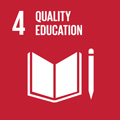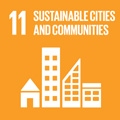- Docente: Francesco Lipparini
- Credits: 4
- SSD: ICAR/18
- Language: English
- Teaching Mode: Blended Learning
- Campus: Bologna
- Corso: Second cycle degree programme (LM) in Building Engineering -Architecture (cod. 6728)
-
from Nov 03, 2025 to Dec 15, 2025
Learning outcomes
At the end of the course the student will have acquired an in-depth knowledge on historical tecniques and building characters. The acquaintance with the practicality of the workshop will be also referred to the laws regulating the structural reasons and the constructive feasibility of the technical solutions, within the frame of the wider knowledge in the history of construction.
Course contents
The course offers an in-depth exploration of major themes in the history of construction techniques. Its aim is to provide students with an analytical understanding of the materials and methods that have enabled the creation of architectural works of varying formal and stylistic character across different historical and geographical contexts.
The following topics will be addressed in detail:
- Classical architecture: Roman building techniques and masonry systems
- Medieval architecture: construction in stone, brick, and timber
- Modern architecture: from iron structures to reinforced concrete
In parallel, the course will explore the historic center of Bologna, focusing on its architectural heritage, building techniques, and urban transformations across different historical periods. A site visit will be organized to allow students to directly experience the urban fabric and to critically engage with its historical, cultural, and conservation aspects. A site visit will be organized, and students will be asked to work in groups to produce an assignment on this theme, in connection with the “Heritage Conservation” component of the integrated course.
Readings/Bibliography
The general bibliography for the course includes:
- P. Roca, P. B. Lourenço, A. Gaetani, Historic Construction and Conservation. Materials, Systems and Damage, Routledge, 2019 (Chapters 3, 4)
- F. Ceccarelli, D. Pascale Guidotti Magnani, The Bolognese Portico. Architecture, History, and the City, Bologna University Press, 2022 (entire volume)
Other suggested readings will be provided during the course
Teaching methods
The course will be delivered through a combination of lectures, seminars, and practical assignments, some of which will be carried out in class and others at home. Student work will also include a presentation of the research achieved during the course.
Assessment methods
For attending students
Students will present the results of their group project. They are expected to demonstrate solid theoretical knowledge of the porticoes and provide an in-depth understanding of the specific case study analyzed. They will also answer one or two questions concerning the general course content. All members of the group must actively participate in the presentation. Group work must undergo one or more reviews with the instructor, either online or in person.
For non-attending students
Students are required to demonstrate comprehensive theoretical knowledge of all topics covered in the lectures and, in particular, to study carefully the volumes indicated in the syllabus. They will be asked to answer three or four questions on the general course program. Studying exclusively from notes or slides will not be accepted. The required readings are as follows:
- P. Roca, P. B. Lourenço, A. Gaetani, Historic Construction and Conservation. Materials, Systems and Damage, Routledge, 2019 (Chapters 3, 4)
- F. Ceccarelli, D. Pascale Guidotti Magnani, The Bolognese Portico. Architecture, History, and the City, Bologna University Press, 2022 (entire volume)
Teaching tools
Presentations and other teaching materials used during lectures will be made available on Virtuale.
Office hours
See the website of Francesco Lipparini
SDGs



This teaching activity contributes to the achievement of the Sustainable Development Goals of the UN 2030 Agenda.
